Real-estate experts question demand for 10-block Penn Station area proposals
Property experts in New York City are questioning whether demand for new office space will keep up with supply as plans progress for a new 10-building development in Midtown Manhattan.
In July, economic development board Empire State Development voted to move forward with proposals to upgrade Penn Station and push ahead with a strategy that will deliver 10 new blocks in the vicinity over the coming two decades.
One of the eight sites earmarked for redevelopment currently contains the disused Hotel Pennsylvania, which is owned by Vornado Realty Trust. Foster & Partners has worked with Vornado on proposals for a tower on the site.
Earlier in the summer the practice – along with US multi-disciplinary design firm A Epstein and Sons – was appointed to draw up redevelopment plans or the Midtown Bus Terminal, around half a mile away from Penn Station. Initial massing proposals showed a scheme featuring four towers, all taller than Renzo Piano’s nearby 52-storey New York Times building.
An environmental impact statement for the Pennsylvania Station Area Civic and Land Use Project, published in June by Empire State Development, said the development would create a “cohesive, transit-oriented mixed-use district” and support the reconstruction and expansion of Penn Station.
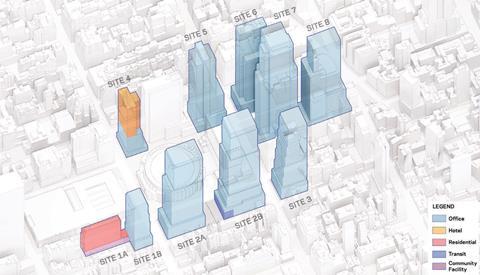
The document said the proposals would deliver up to 1.7m sq m of office space and around 1,800 new homes, depending on the preferred balance of commercial space and residential, as well as public realm improvements.
The statement suggests a range of building heights from 84m to 387m, which is around the same height as the nearby Empire State Building – minus its spire. The tallest element would be for for the site of the Hotel Pennsylvania.
While the redevelopment plans have the backing of New York governor Kathy Hochul, detractors told the New York Times that the proposals represented a gamble on increasing demand for office space, which was far from certain in a post-pandemic environment.
The paper also noted that “nearly 37%” of the office space at the nearby Hudson Yards development – which includes elements by Kohn Pedersen Fox, Foster & Partners, Diller Scofidio & Renfro, Skidmore, Owings & Merrill and Heatherwick Studio – is currently available for lease.

It said the figure was the highest rate in Midtown, according to real-estate business Avison Young, and that nearly half of all office construction in Manhattan was under development there.
Commercial real-estate broker Ruth Colp-Haber, who founded Wharton Property Advisors, said workers exercising their preference for flexible working arrangements in the long term would change the landscape of the market.
“Tenants move from building to building, and if there is insufficient growth due to the remote-work phenomenon, which is here to stay, there will be landlords who are left with empty offices,” she said.
Richard Ravitch, a former New York State lieutenant governor and Metropolitan Transportation Authority chairman, said the Penn Station Area proposals should be treated with caution at a time when office vacancy rates in Manhattan were 19% on average.

He also opposed the idea of using new office development to fund upgrade work at Penn Station itself, which is expected to cost in the region of US$7bn (£6bn).
“Given what has happened to the commercial market, it’s not going to be a source of revenue for a long time until the market turns around,” Ravitch said. “Where we get the money for Penn Station should be a separate question.”
Empire State Development spokesman Matthew Gorton disagreed.
“Encouraging transit-oriented development in one of New York City’s prime business districts while finally delivering a new, world-class Penn Station that New Yorkers deserve is not only smart strategy — it makes sense,” he said.
“Time and again, history has proved betting against New York is a losing proposition.”
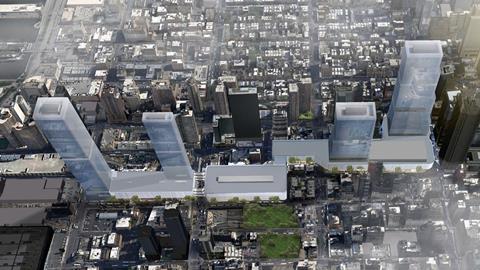
Penn Station’s original Beaux Arts building was demolished in 1963 however its underground tracks and platforms remain and it is the busiest station in the United States. The Madison Square Garden arena is now directly above.
Across 8th Avenue from Madison Square Garaden is SOM’s conversion of the Beaux Arts former James A Farley Building into the Moynihan Train Hall. Opened last year, the building gives new access to Penn Station’s platforms.
Under the proposed redevelopment of Penn Station passengers would benefit from taller ceiling heights and new entrances. The environmental statement also refers to the potential for the station’s southern expansion.





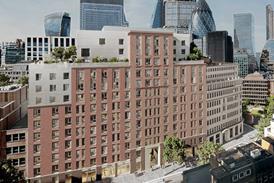



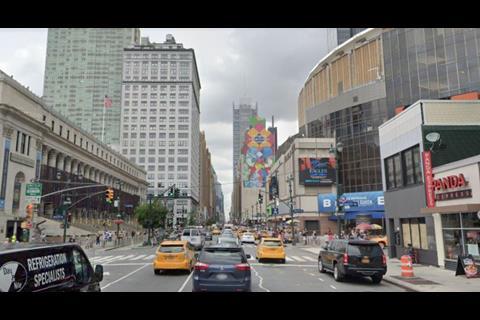
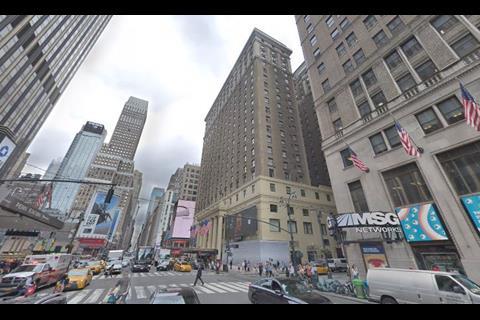

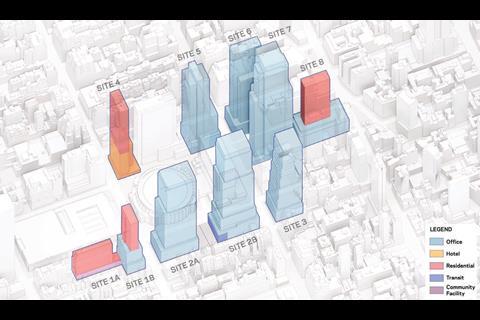

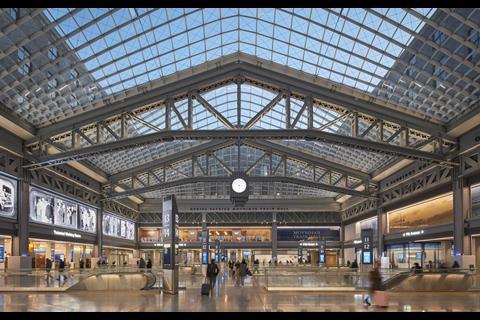








No comments yet